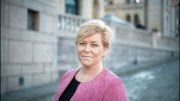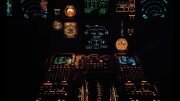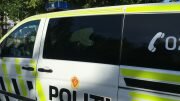Here they grow larvae to be fish feed
It started in Tanzania. InvertaPro is now in the process of insect larvae production at Voss in Hordaland.
The idea is to end up with a fully sustainable product. The larvae are fed with different types of waste and residues before they are ground and become protein and fat that can replace fishmeal in fish feed.
But InvertaPro is not quite there yet.
– We are in an initial phase, and determine whether this is possible to achieve in Hordaland region, says CEO Alexander Solstad Ringheim in InvertaPro.
Tests and analyzes
So far, they are running a test facility at Voss, where different types of feed for the larvae are tested. When the larvae are fully grown, they are ground and sent for testing at the Marine Research Institute in Bergen.
“We are in the process of a preliminary project, supported by the Research Council of Norway, and are working to test the various feed types we get into the insects. There is everything from coffee grounds, brewery waste, vegetables, fruits and dairy waste. Through the analyzes of the Institute of Marine Research, we learn a lot about what is important when we are going to raise a colony and to test the raw materials available in Hordaland, Ringheim says.
Loans from Bir
Recycling Brouchure from Bir. Photo: bir.no
Recently, the Bergen Renewal Company, Bir, entered into a partnership with InvertaPro, which includes capital and resources for the project.
– We do because we are concerned with how we will utilize the food waste we collect at Bir. Today, much of the food waste goes to combustion, and some for composting, says Toralf Igesund, Managing Director in Bir.
Previously Bir produced pig feed from the food waste, but this was banned as a result of the rule changes after the outbreak of mad cow disease in the United Kingdom.
– Now there’s new technology and a new way to exploit the food waste by cultivating insect larvae. We think that is very exciting, says Igesund.
Pilot plant next year
During the year, InvertaPro will determine if there are enough resources of good quality available in Hordaland to breed insects as feed, whether it is economically viable and what technology is required for it to work. Next year, the plan is to build a pilot plant in Hordaland.
The company has been nominated for prices such as Climate Launch Pad and Spirprisen, and has received a local award from Sparebanken Vest.
– For us, it means that people actually believe in what we do, that it is not just a good thought, Ringheim says.
Step-by-step development
From the beginning of 2019 they assume to make money on the operation. That year, it is also planned to start up a large scale facility.
Each plant will consist of four to six smaller production units at different locations, which deliver to a processing department. The pilot plant will equal one such production unit.
Initially, fat and protein from the larvae will be delivered as pet food. The reason is that the quantity at the start is too small to be able to be used as fish feed.
– We have to take it step by step, and sell to the market that receives the product first. But when we manage to meet the requirements of the aquaculture industry, we will also sell to them.
Fishmeal, for example, provides for protein in the fish feed, and has traditionally been made of marine species. The industry is looking for resources to replace these and has, among other things, switched to plant oil and algae. Insects were tested out by Nifes three years ago.
– We look at waste as a resource, while we can replace fishmeal with insects based on truly sustainable feed ingredients. It is very exciting, says Ringheim.
Red garden ants, Pixabay.com
Facts about InvertaPro
- Jon Gjerde, who is also involved in Kitemill, is one of the owners.
- The idea got the founder Alexander Solstad Ringheim in Tanzania, and InvertaPro has a sister facility there.
- In 2016, InvertaPro Norway was formed, and in December that year, the test facility at Voss started.
© Sysla.no / Norway Today




